Laboratory of Ore Magnetic Systems
Head of the Laboratory: Olga A. Eliseeva, Cand. Sc. (Geology and Mineralogy)
Tel. +7-902-4803-891
E-mail: This email address is being protected from spambots. You need JavaScript enabled to view it.
 |
The Laboratory of Ore-Magmatic Systems was created in 2017 on the basis of the Laboratory of Metallogeny of Pacific Belt initiated in 1959. Back then, under the direction of the Corresponding-Member of the USSR Academy of Science E.A. Radkevich the applied and fundamental investigations of the conditions for the ore deposits’ formation and genesis, their relation to the evolving magmatic systems that produce metalliferous fluids differing in origin and composition were started. During this period of time the laboratory’s name changed several times: Laboratory of Metallogeny of Ore Districts (headed by Candidate of Geological and Mineralogical Sciences P.G. Korostelev (1975–1988), under whose direction the laboratory for the time period from 1986 to 1988 was renamed into the Laboratory of Tin and Tungsten). Since 1988 the Laboratory of Metallogeny of Ore Districts was consequently headed by Doctor of Geological and Mineralogical Sciences V.V. Ratkin (1988–1997), Doctor of Geological and Mineralogical Sciences V.G. Gonevchuk (1997–2011), and Doctor of Geological and Mineralogical Sciences V.I. Gvozdev (2011–2017). One of the main tasks of the laboratory was and still is the development of the genetic models of formation of ore-magmatic systems with different types of mineralization (tin-tungsten, polymetallic, boron, gold-silver and REM) based on a detailed study of petrologic, mineral and geochemical, geochronological, and thermobarogeochemical characteristics of the magmatic, metasomatic and ore-forming processes in different geodynamic settings of the continental lithosphere of the Russian Far East. In 2012 the laboratory incorporated the Laboratory of Gemology (headed by Candidate of Geological and Mineralogical Sciences B.L. Zalishchak (1999–2003) and Candidate of Geological and Mineralogical Sciences V.A. Pakhomova (2003–2011)). Certified gemmologists form a group of experts equipped with devices allowing a complex study and diagnostics of minerals, precious stones and their imitations. The up-to-date high-technology equipment assists in the research on the phase composition of fluid inclusions in transparent minerals, as well as in the diagnostics of raw gemstones. It is also used for the specialized investigations carried out on request of scientific and educational institutions, business representatives or governmental authorities of Primorye.
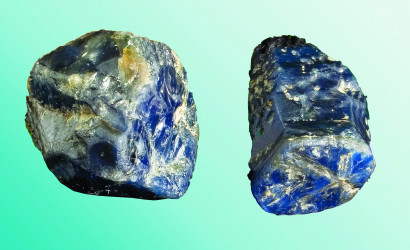 |
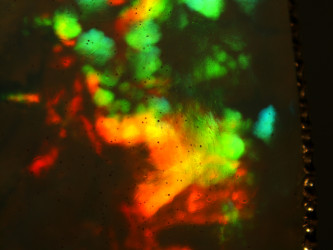 |
From 2017 to 2019 the laboratory was headed by Candidate of Geological and Mineralogical Sciences A.S. Vakh, while at present it is headed by Candidate of Geological and Mineralogical Sciences O.A. Eliseeva. The laboratory employs 11 researchers, comprising 2 Doctors and 6 Candidates of Geological and Mineralogical Sciences.
Major research directions of the laboratory:
- Study of metallogenic zones of the Sikhote-Alin, the Mongol-Okhotsk and the Bureya-Khanka superterranes;
- Study of metallogenic characteristics of metallogenic zones and districts, namely: Samarga (tungsten), Luzhkinsky (tin) and Taukha (leadzinc-boron), Badzhal, Komsomolsk, Arminsky, Dalnegorsk, Kavalerovo as well as Eastern Transbaikal and Upper Priamurye;
- Discerning of the relations between magmatism and ore-forming processes, construction of the models of highly productive ore and magmatic systems of different ranks and criteria identification for their recognition;
- Study of the mineralogy and geochemistry of gemstones of different ranks from the following deposits: Nezametnenskoe and Sutara – corundums; Raduzhnoe – opals; Zabytoe – topazes; Shibanovskoe – smoky quartz; Dalnegorsk borosilicate deposit, etc.
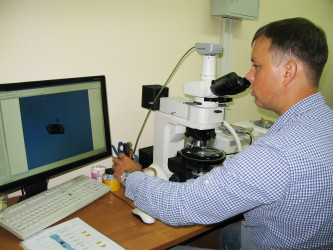 |
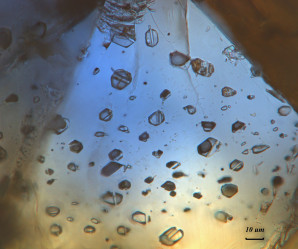 |
One of the most important achievements of the last years is the improvement of the construction method of genetic models of the local ore-magmatic systems which is considered to be the solution of a complex scientific problem – the relationship between the endogenous ore formation and magmatism. The methodology of studying complex (superposed) tin-tungsten ore-magmatic systems in the new (plate-tectonic) scheme of the geodynamic and metallogenic evolution of the region was substantiated. The reconstruction of the physicochemical parameters of main ore sites of the Badzhal metallogenic zone was performed. On the basis of the study of melt and combined fluid and melt inclusions and oxygen isotopes in quartz of granitoids of the Urmiysky massive of the Badzhal volcano-plutonic zone, and in minerals of Pravo-Urmiyskoe and Blizhnee Sn-W ore deposits, we were the first to observe the transition from the magmatic
phase to the hydrothermal stage and magmatogene fluid evolution from its separation from the magmatic melt to the deposition of Sn-W ores. We preliminarily assessed the perspectives of the development of Scherbakovskoe cassiterite-polymetallic, Nizhnee (Furmanovsky district) cassiterite-silicate (tourmaline type) and Arsenyevskoe (chlorite type) (Kavalerovsky district) deposits. Their development will be of high profitability under the condition that in addition to the main metals (tin, lead, and zinc) the accompanying and industrially important metals such as copper, silver, indium, bismuth and other are also extracted. A working two-factor model of the metallogenic zonality of Sikhote-Alin was made during the investigations of geology and metallogeny of the Taukha and Zhuravlevka zones. The dominant constituent is in the formation of zones within the regionally distinct and geochemically enriched in ore components of blocks (geochemical reservoirs) – terranes. The ore components are borrowed from the upper crust substratum in the process of melt contamination taking place during the formation of the upper crust magmatic chambers. The metalliferous melt generation occurs with the active involvement of the fluid-magmatic component of the mantle (asthenospheric) origin. This ensures the presence in a magmatic melt (chamber) of an anion juvenile constituent in the form of sulfur, fluorine and chlorine. The mentioned elements serve as an essential part of tore components’ transportation and the process of formation of the sulfide ores of hydrothermal origin. The combining of these factors results in the geodynamic regime of transform continental margins and it ensures the abnormally high ore content of granitoids formed under these conditions.
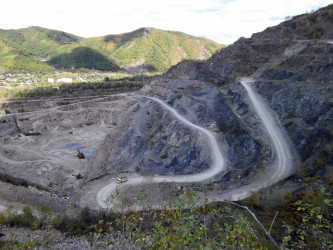 |
 |
According to the thermodynamic calculations made during the studying of the primary inclusions in corundums of the Sutara deposit using the Selektor software, the formation of the diaspore on the corundum matrix took place in a high-density carbonic fluid at the temperature of 305 °C. It was determined that in an aqueous-carbonic fluid the corundum-diaspore equilibrium moves to the high-temperature area and depends on the pressure. Under the known composition of the aqueous-carbonic fluid and temperature, the inclusions of diaspora in corundums can be used as a geothermobarometer. The international activity of the laboratory’s researchers includes joint projects with the colleagues from the Institute of Geological Sciences of the Vietnam Academy of Science and Technology on the development of a working model of the mantle-crust nature of deposits of the Pb-Zn metallogeny of the Lo Gam zone (North Vietnam).

